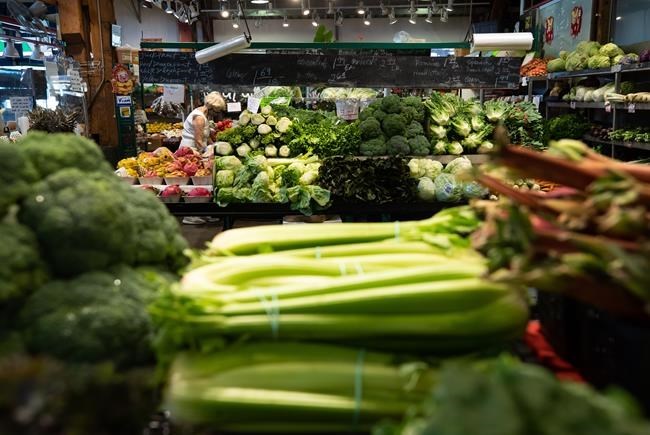Food inflation appears to be easing in Canada, but experts say shoppers shouldn't expect lower prices at the grocery store.
Statistics Canada said Tuesday the cost of groceries in February rose 10.6 per cent compared with a year before, down from an 11.4 per cent year-over-year increase in January.
Yet a falling food inflation rate doesn't mean the price of food is coming down.
Instead, it means prices are rising less quickly, signalling the worst of the grocery price hikes could be behind us.
"Consumers may still feel sticker shock at the grocery store because the products they buy are up closer to 15 or 20 per cent," said Sylvain Charlebois, director of the Agri-Food Analytics Lab at Dalhousie University.
In the month of February, multiple pantry staples increased by nearly double the overall inflation rate for food purchased from stores.
Pasta prices rose 23.1 per cent last month compared with a year earlier, flour jumped 22.9 per cent and butter increased 19.7 per cent, according to Statistics Canada.
Fats and oils also climbed significantly higher than the food basket average, up 18.8 per cent year over year. Sugar and syrup prices rose 15 per cent, cereal was up 14.8 per cent and eggs increased 13.6 per cent.
Still, the overall pace of food price increases eased in February and is expected to abate further in the coming months, Charlebois said.
"We expect the food inflation rate to continue to drop as we head into spring and early summer," he said.
Fraser Johnson, a professor of operations management at Ivey Business School, said he expects a "steady progression to more normalized price increases" by the end of the calendar year.
"What I'm seeing is a shift in power between the suppliers and the buyers," he said.
"A year or 18 months ago, certainly there was more supplier power in terms of pricing, but now things are starting to stabilize in terms of wait times, in terms of supply chain disruptions. Buyers are starting to exert more force and prices are ... not rising as quickly as they were."
But factors such as high costs for delivery, packing and labour, coupled with historically high commodity prices, are still contributing to rising grocery bills.
Johnson noted that while the price of oil has fallen in the last month, there is a lag until the effects are seen on the price of food.
"It's easier for prices to go up than to go down," he said.
"It takes time for contracts and pricing to work their way through the system. If you take a look at grocery chains like Loblaw or Sobeys, you've got multiple suppliers and multiple products which means that you've got to negotiate with your suppliers to be able to bring the pricing back in line, and that all takes time."
Meanwhile, restaurant prices eased even more than grocery prices in February.
Statistics Canada said food purchased from restaurants rose 7.7 per cent last month compared with a year before, down from 8.2 per cent price growth in January.
"People are being extra careful with their budget these days and restaurant operators are being very prudent with menu prices," Charlebois said.
— With files from Sammy Hudes
This report by The Canadian Press was first published March 21, 2023.
Brett Bundale, The Canadian Press



